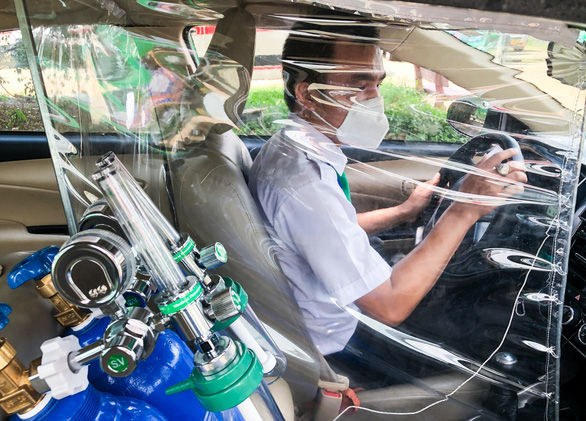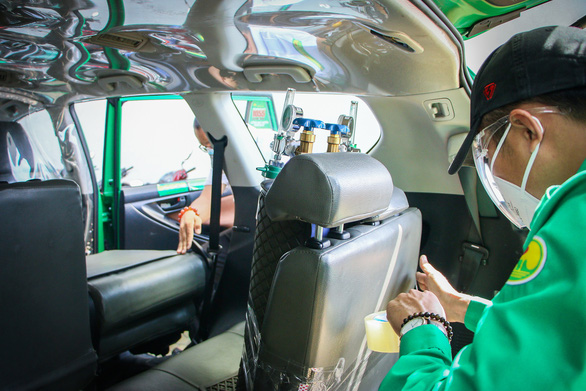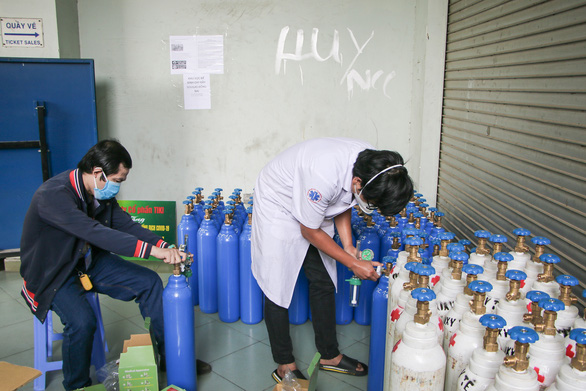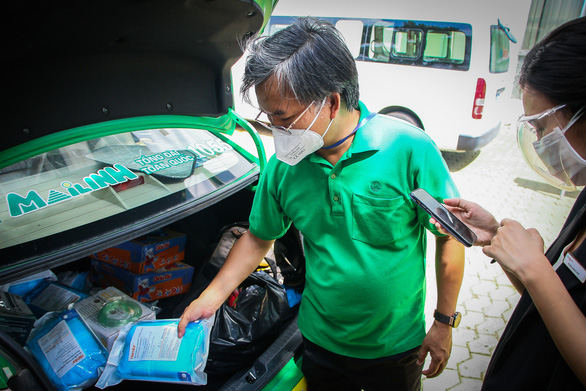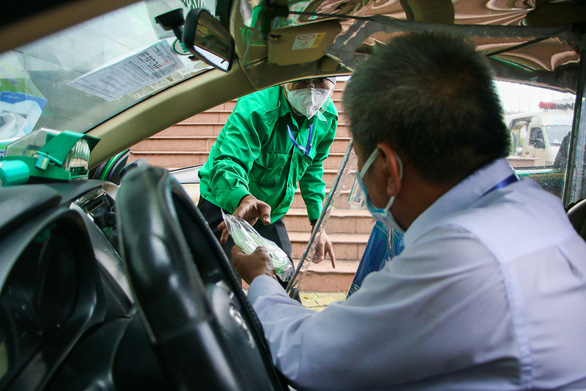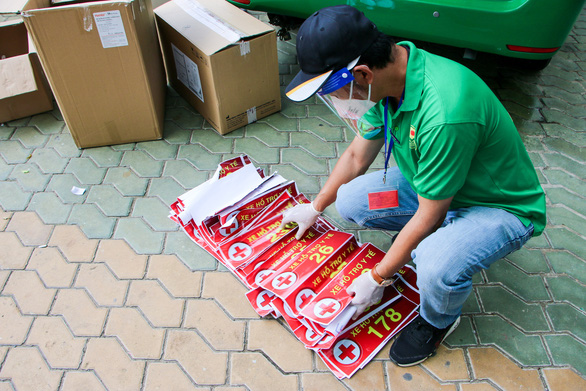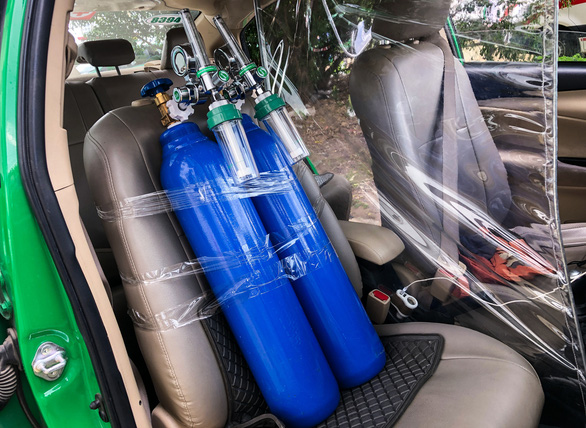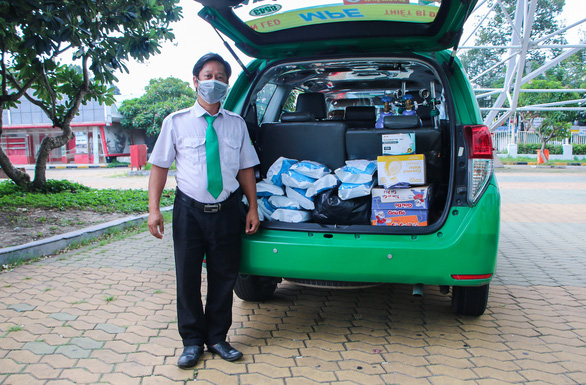A fleet of 15 taxis of operator Mai Linh was transformed into ambulances at Phu Tho Sports Center in Ho Chi Minh City on Wednesday as the city is still struggling with the current COVID-19 spread.
This was part of a joint initiative between Mai Linh Group and Ho Chi Minh City’s health and transport departments to prepare for emergency medical cases, during a time when all public transport, taxis, and ride-hailing services have been halted to lower transmission risks.
The city plans to convert 200 taxis into 24/7 ambulances, and has so far completed modifications to 55 since the initiative started on July 28.
All vehicles in the emergency fleet will be furnished with standard medical equipment, including oxygen tanks, mask ventilators, pulse oximeters, quick COVID-19 test kits, and personal protective equipment. A medical professional will accompany them as well.
|
|
| Mai Linh Group’s taxicabs are converted into ambulances at Phu Tho Sports Center in Ho Chi Minh City, August 4, 2021. Photo: Chau Tuan / Tuoi Tre |
|
|
| Gas tanks are to be loaded onto Mai Linh Group’s taxicabs, August 4, 2021. Photo: Chau Tuan / Tuoi Tre |
According to Ho Huy, chairman of Mai Linh Group, the taxi-ambulance fleet, organized as per the municipal Department of Health’s guidance, will be equipped with transparent partitions to prevent the spread of airborne particles in the cars.
They will have emergency stickers on the front and back for easy identification.
Drivers participating in the emergency initiative will be instructed to uphold safety guidelines, wear protective equipment, and attend medical training.
In order to drive the cars, they must get at least one dose of coronavirus vaccine, and have experience driving during the previous social distancing periods of Ho Chi Minh City.
|
|
| A Mai Linh cabby prepares PPE items on his vehicle, August 4, 2021. Photo: Chau Tuan / Tuoi Tre |
|
|
| A technical specialist guides a Mai Linh taxi driver on how to use oxygen tanks, August 4, 2021. Photo: Chau Tuan / Tuoi Tre |
|
|
| Emergency stickers are to be installed on Mai Linh Group’s taxicabs, August 4, 2021. Photo: Chau Tuan / Tuoi Tre |
Speaking with Tuoi Tre (Youth) newspaper, Hoang Duc Luong, a 23-year-old driver in the emergency fleet, said he immediately signed up for the role after his employer Mai Linh opened the recruitment call.
“I was sent to the area surrounding Nguyen Thai Son Clinic in Go Vap District to transport arriving or departing patients, including COVID-19 cases.”
“Due to the nature of the job, I decided to bring my own personal items and stay at the clinic until the end of the outbreak to keep my family safe.”
Luong admitted to being more or less worried, but he still pushes on as many local residents need his assistance.
“My only wish is for Saigon to soon come out of the epidemic so everyone can go back to their normal life,’ Luong said.
|
|
| Oxygen tanks are installed in the backseat of a Mai Linh Group taxicab, August 4, 2021. Photo: Chau Tuan / Tuoi Tre |
|
|
| A ‘No air conditioner due to the pandemic’ sign in a Mai Linh Group taxicab, August 4, 2021. Photo: Chau Tuan / Tuoi Tre |
|
|
| A Mai Linh Group taxicab is stocked with food, August 4, 2021. Photo: Chau Tuan / Tuoi Tre |
Ho Chi Minh City has emerged as Vietnam’s gravest outbreak site, recording 108,379 cases out of the country’s total of 177,855 domestic infections since the fourth wave began on April 27.
The situation prompted authorities to put the city under a tightened social distancing mandate that forbids public gatherings of over two, bans non-essential businesses and services, and requires people to stay home.
Vietnam reported on Thursday morning 3,943 new cases of COVID-19, including two imported and 3,941 local transmissions, bringing the nationwide tally to 181,756, according to the Ministry of Health.
Like us on Facebook or follow us on Twitter to get the latest news about Vietnam!



